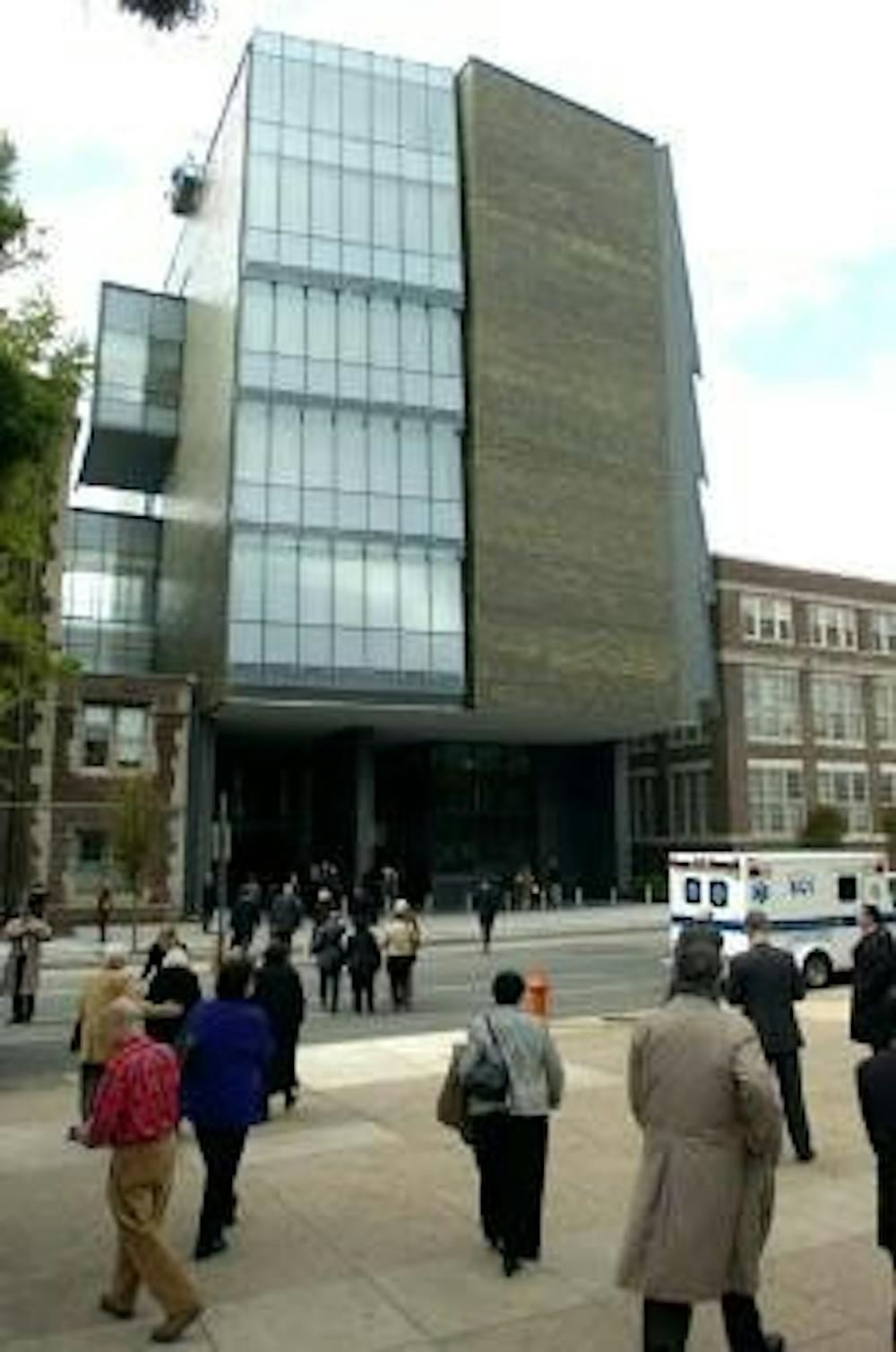
An everyday nuisance for Penn students turned fatal last month at Ohio State University.
On Oct. 20, OSU freshman Andrew Polakowski of Erie, Pa., was killed when he tried to pile into an overcrowded elevator in a dorm on campus. The packed elevator - which had exceeded its maximum weight limit - began to move with the doors still open, and Polakowski was crushed between the elevator and the floor.
His death has prompted officials to evaluate the risk of a similar incident on their own campuses.
"How do we go to sleep at night knowing this won't happen here?" Penn's Executive Officer of Operations Mike Coleman asked.
University officials acknowledge that elevator overcrowding is an issue in the high rises, but they are quick to reassure students that what happened at Ohio State University could never happen at Penn.
They don't deny that elevators stall, but, according to Coleman, each elevator on campus undergoes regular, rigorous testing, and currently meets every safety standard required. The high-rise elevators have a 3000-pound weight limit.
Coleman added that, in the wake of Polakowski's death, investigators discovered that there were questions about the "integrity" of elevator brakes at OSU. All tests on elevators at Penn have come out clear.
The University tests all elevators every five years, as required by Pennsylvania law, Coleman said. Monthly tests are also completed by Otis Elevator Co., which holds the contract for the elevators.
Administrators say students are safe, but they readily admit that testing is not a guarantee of perfect performance.
In Harrison College House, for instance, a report prepared for Facilities by Otis states that there have been 13 incidents in the past year in which students placed an emergency service call from inside a malfunctioning or stuck elevator.
Wharton senior Brett Thalmann, a residential adviser in Harrison, said he was stuck in an over the summer, and was impressed with the University's response.
Thalmann said that Penn emergency response staff answered him immediately after he pressed the "Help" button in the elevator. He was freed soon after.
Penn Public Safety spokeswoman Karima Zedan wrote in an e-mail interview that all calls from the elevator phones are answered by the PennComm Center, which handles most University maintenance requests.
Penn Police, as well as staff from Facilities, are dispatched to rescue students and fix the elevator, Zedan wrote. If they can't fix it on their own, they call the Philadelphia Fire Department.
College junior Shawn Shroff said that he was once briefly stuck in a Harnwell elevator. Although the elevator only stalled for about a minute, Shroff said, "everybody else was nervous."
For students who do find themselves stuck in an elevator, Coleman said to remain calm.
"It can be a bad feeling," he said. "But it can be worse if you try and get out" without assistance from a trained engineer.
In addition to full-time Penn Facilities staff and engineers, two to four Otis engineers also come to campus daily to handle maintenance and other elevator needs.
Penn Facilities officials say, however, that some responsibility for the elevators lies with students.
Students should know that elevators are "sensitive," Coleman said. Overloading them or trying to block the doors "can very easily cause a delay," he said.
The Daily Pennsylvanian is an independent, student-run newspaper. Please consider making a donation to support the coverage that shapes the University. Your generosity ensures a future of strong journalism at Penn.
DonatePlease note All comments are eligible for publication in The Daily Pennsylvanian.








